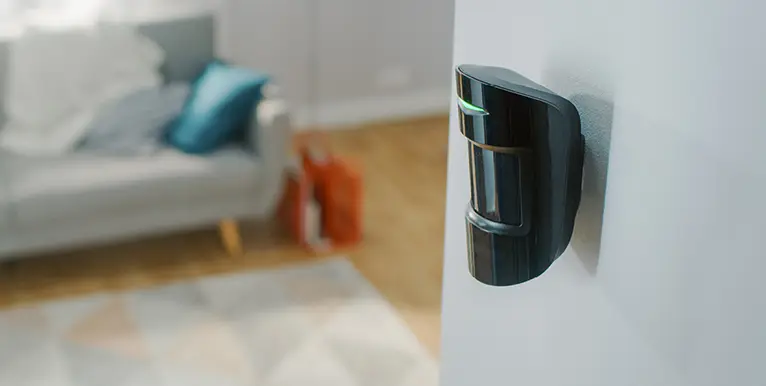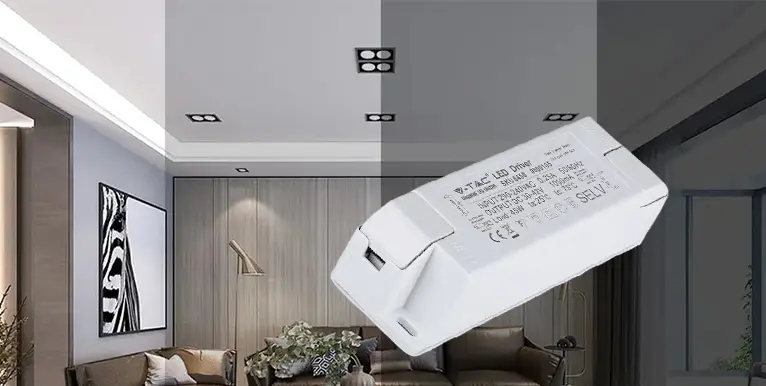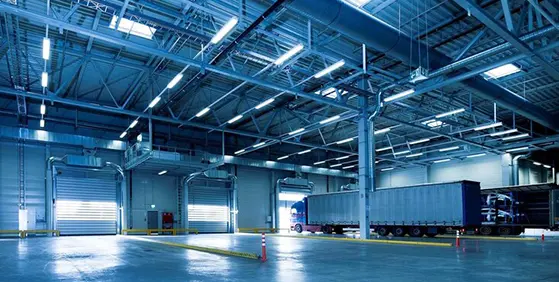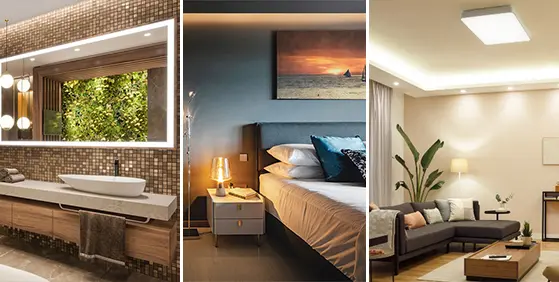Thankfully, the days of fluorescent strip lights flickering overhead in the office are gone, and if you still have those, let us introduce you to LEDs and welcome to the 21st century.
One-third of our lifetimes, or about 90,000 hours, are spent at work and while we’d all like to be working in those offices we see in the movies, high in the sky with floor-to-ceiling glass and flooded with natural light, in reality, few of us do. If you work in an office, it’s worth spending some time planning out the best possible office lighting.
What’s the best lighting for an office?
Offices are all about what is termed “task lighting”. This is the lighting needed to assist in doing something and to be effective, task lighting has specific lumen and temperature recommendations.
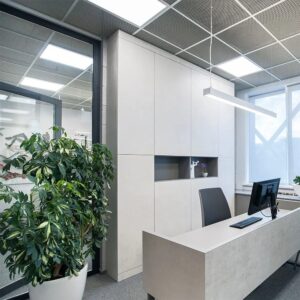

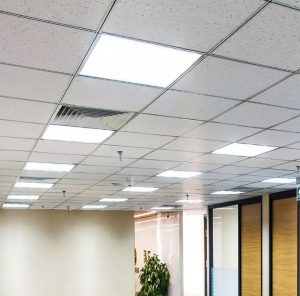
Receptions and chill-out areas in the office should have more gentle ambient lighting which can also be achieved with LEDs and at a much lower energy consumption than with older lighting types. Every office manager is in a battle to increase productivity and improve morale in their staff and the right lighting choice can help with both – and cut costs at the same time.
Is LED lighting good for the office?
LED lighting is perfect for the office. Lighting, particularly in winter, needs to be left on for long periods and illuminate large areas and LED lights use up to 90% less energy than older lighting types, depending on whether they are fluorescent tubes, incandescent bulbs or CFL lighting.
To better understand lighting, it helps to understand the differences between Lux, Lumens and temperature (Kelvin):
How many Lumens and/or Lux do I need for my office – and what happened to Watts?
Lumens are the measure of light emitted from a light source and Watts are the measurement of energy used to emit that light. As lighting has become more efficient, the amount of Watts required to emit the same Lumens has reduced dramatically so suppliers have switched to measuring in Lumens because measuring brightness is a more useful measurement for the consumer.


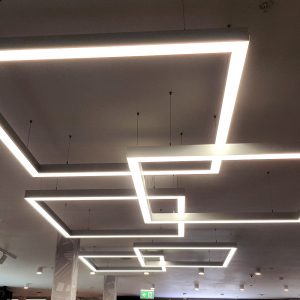
For example; a traditional 60W incandescent bulb emits 500 – 700 Lumens. An LED uses just 5 – 7 Watts to emit the same light.
Lux is a measurement of the “amount” of light given out per square meter and can be used to measure the intensity of light falling on a surface. As the eye sees light when it reflects off a surface, the higher the Lux the brighter that surface is.
In the UK, office lighting guidance comes from the Chartered Institute of Building Services Engineers (CIBSE), Lighting Guide LG7. The guide recommends office task lighting at:
- 300 lux for mainly screen-based tasks, which can include minor paper-based tasks such as note-taking
- 500 lux for mainly paper-based tasks
In the USA, refer to guidance from the Occupational Safety and Health Administration.
What is the best colour temperature for an office?
Colour temperature is measured in Kelvin (K) and refers to the “warmth” or “coolness” of light by its colour. Warm whites measure in at about 2700K and have more yellow and red in them while cool colours are bluer, with a Kelvin above 5000K.

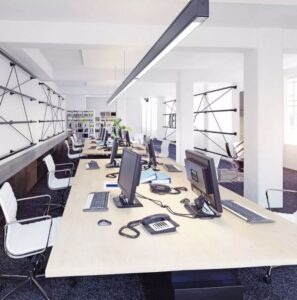

Natural daylight (the lighting humans evolved to live with and therefore the Kelvin we feel most comfortable at) is typically 5000 – 7000K depending on the time of day and the weather. Consequently, this is the best temperature colour range to aim for when lighting an office as it will reduce eyestrain and stress for your staff.
Replacing Fluorescent Tubes
LEDs are now available in all fitting types and styles so replacing older types and saving money on your office running costs have never been easier. We recommend you start by replacing fluorescent tubes with LED equivalents. These tubes are specifically designed for direct replacement and while you could replace them one by one as each fluorescent tube starts to flicker and die, this would result in a mismatch in lighting levels across the office causing stress in your staff as the brain attempts to manage the imbalance. Far better to replace them all at once and begin saving on your energy bill immediately.
What about my home office?
Following the Covid-19 outbreak, lockdowns and work-from-home, far more of us now have a home office set up in a spare bedroom or corner of the living or dining rooms.



The recommendations for lighting a home office are different to a regular office as the room or space is usually smaller and task lighting can be restricted to a single desk area. We suggest relaxing, warmer lighting with lower K and Lux values for much of the room. It’s in your home, after all, and you probably use it for other purposes like reading or hosting guests when it’s not in use as an office.
Use overhead, floor standing or desk lamps around 300Lux and 5000K for your actual desk area to avoid eye strain and a work-friendly environment.
Reception Areas
Your office reception area is where you welcome your staff and visitors. It needs to be well lit but you also want it to make a great first impression. If you have a reception desk consider using LED strip lighting affixed under the edge of the desk or the pedestal if it’s a solid unit.
Using colour-controlled LED lighting strips set to match your company branding in this way makes a feature of your reception desk and a brand statement for your clients as soon as they step through the door.
What else can I do?
Installing LEDs will immediately reduce your energy bills. But you can reduce them even further with smart lighting solutions. Smart lighting and switches that can be app-controlled mean you don’t have to be in the office to switch them off and other smart sensor solutions including PIR motion or microwave sensors mean that the lights in part of your office will automatically turn off when nobody is in that area and light-sensitive sensors that switch off at night.
However large or small your office is, contact us today and let us ensure you and your staff are well-lit when you’re in the workplace.



